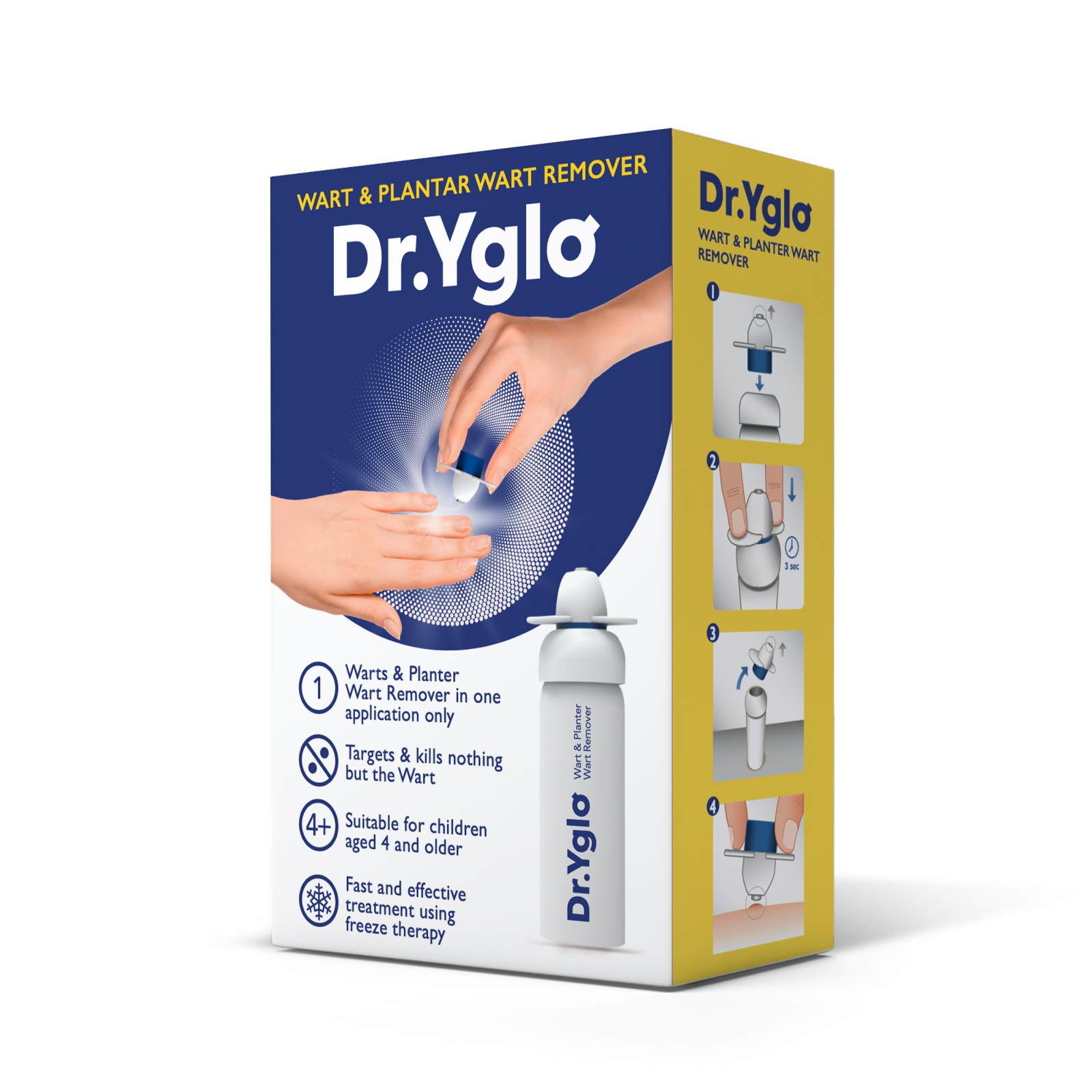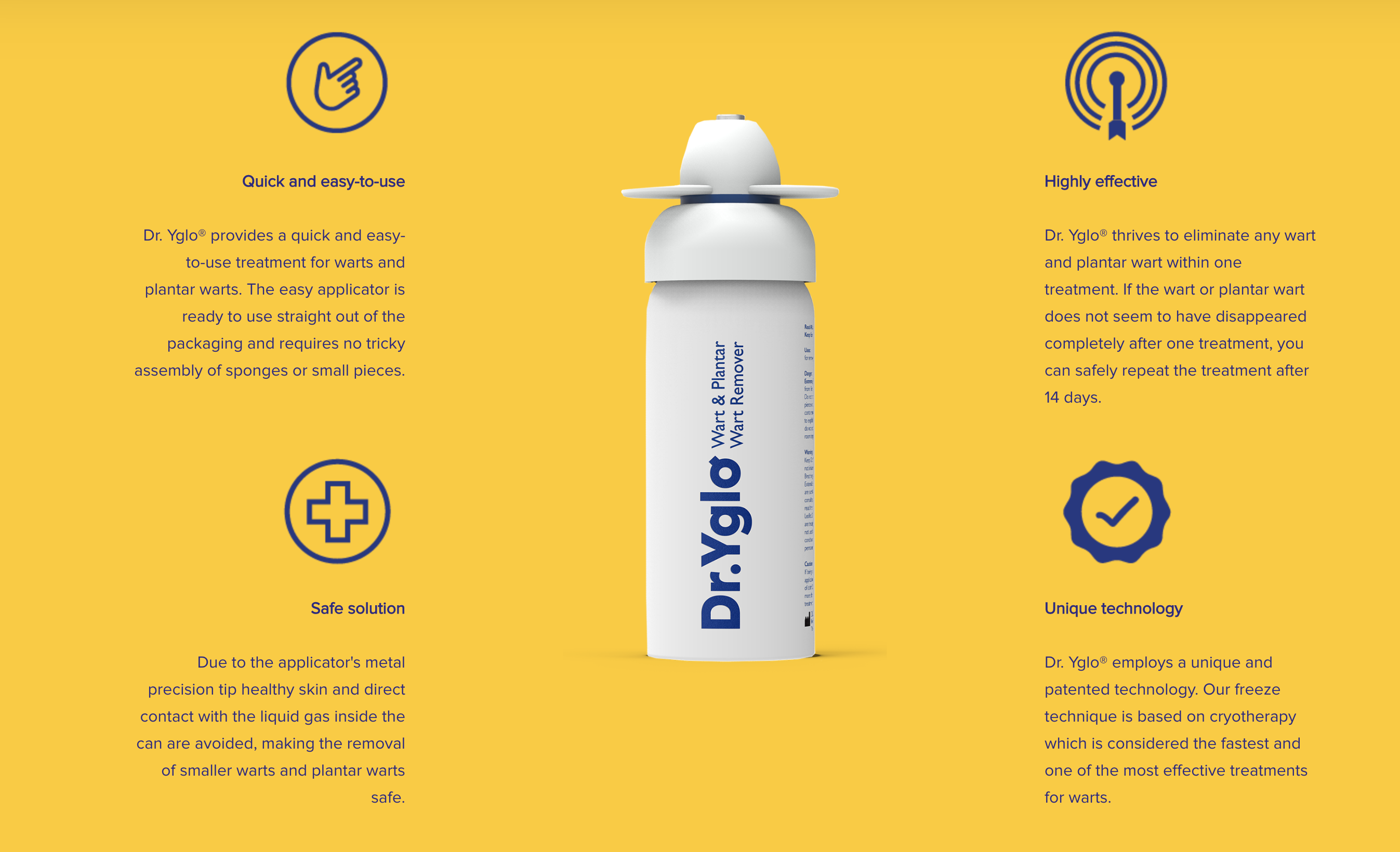Dr Yglo

- Country: The Netherlands
- Category: Health Care
How does Dr. Yglo work
Dr. Yglo® precisely freezes the wart or plantar wart to the core, due to its unique precision tip. The rounded shape of Dr. Yglo’s® cryo tip allows accurate application limited to the wart or plantar wart, thereby avoiding the surrounding healthy skin. This results in a more pain-free application.
When using Dr. Yglo® the area treated may temporarily turn white. After the frozen area thaws, it will turn red. A blister may form underneath the treated wart or plantar wart as a result of the freezing process. The wart or plantar wart will gradually disappear or fall off over the next 10 to 14 days, revealing healthy new skin underneath.
One application should be sufficient to successfully remove a wart or plantar wart. Should a second treatment be necessary we advise you to wait 14 days between two applications. In some cases, it may help to soak the wart in warm water for a few minutes before using Dr. Yglo®.


What are warts & plantar warts?
What are warts?

